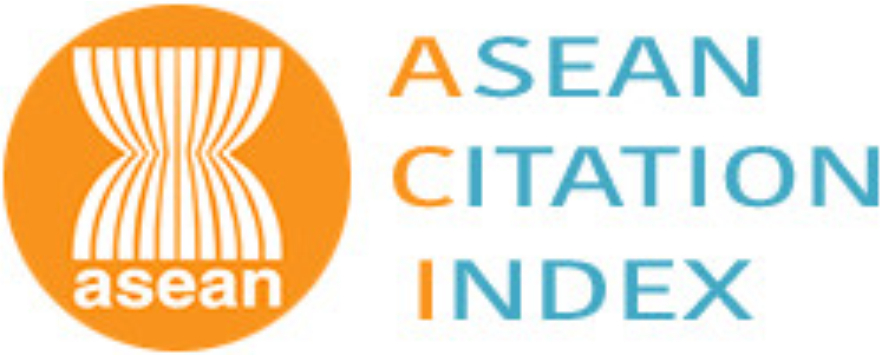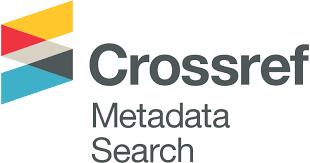Mô hình hóa dự báo ảnh hưởng của hàm lượng sợi đến mô đun đàn hồi của bê tông cốt sợi thuỷ tinh
Email:
nguyendinhhai.1986@utc.edu.vn
Từ khóa:
Đồng nhất hoá, mô hình bão hoà, bê tông cốt sợi thuỷ tinh.
Tóm tắt
Mục tiêu của nghiên cứu này trước tiên nhằm xác định mô đun đàn hồi có hiệu của bê tông gia cường cốt sợi thuỷ tinh (GFRC), sau đó phân tích ảnh hưởng của hàm lượng cốt sợi thuỷ tinh đến mô đun đàn hồi có hiệu của GFRC. Để đạt được các mục đích nêu trên mô hình Bão hoà sẽ được áp dụng để đồng nhất hoá GFRC. Trong nghiên cứu này các pha cấu thành của bê tông được coi là đàn hồi tuyến tính và đẳng hướng. Kết quả thu được bằng mô hình Bão hoà sẽ được so sánh với các biên Voigt, Reuss và các kết quả thí nghiệm đã thực hiện.Tài liệu tham khảo
[1]. B. V. Trần, T. K. Nguyễn, A. T. Trần, Đ. H. Nguyễn, Đồng nhất vật liệu nhiều thành phần - Ứng xử tuyến tính, Xuất bản lần 1, Nhà xuất bản Xây dựng, Hà Nội, 2019.
[2]. A. Zaoui, Matériaux hétérogènes et composites, Palaiseau : Presses de L’Ecole polytechnique, Paris, 2000.
[3]. J. Eshelby, The determination of the elastic field of an ellipsoidal in- clusion and related problems, Proceedings of the royal society a, 241(1957) 376–386. https://doi.org/10.1098/rspa.1957.0133
[4]. J. P. J. G. Ferreira; F. A. B. Branco, The Use of Glass Fiber-Reinforced Concrete as a Structural Material. Experimental Techniques, Society for Experimental Mechanics. 31 (2007) 64 – 73. https://doi.org/10.1111/j.1747-1567.2007.00153.x
[5]. P. Shtivan, N. Shakor, S. Pimplikar, Glass Fiber Reinforced Concrete Use in Construction, International Journal of Technology and Engineering System, 2 (2011) 6 pages.
[6]. F. Larrard, T. Sedran, Optimization of ultra high-performance concrete by the use of a packing model, Cement and Concrete Research, 24 (1994) 997-1009. https://doi.org/10.1016/0008-8846(94)90022-1
[7]. D. H. Phạm, V. Đ. Đào, D. A. Phạm, T. D. Nguyễn, Đ. H. Nguyễn, Vật liệu mới trong xây dựng công trình giao thông, Xuất bản lần 1, Nhà xuất bản Giao thông Vận tải, Hà Nội, 2018.
[8]. D. H. Phạm, V. Đ Đào, D. A. Phạm, T. S. Nguyễn, Đ. L. Mai, Công nghệ bê tông và kết cấu bê tông, Xuất bản lần 1, Nhà xuất bản Giao thông vận tải, Hà Nội, 2011.
[9]. D. H. Phạm, T. T. Trần, K. C. Thái, V. D. Đào, T. S. Nguyễn, Thiết kế kết cấu theo độ bền, Xuất bản lần 1, Nhà xuất bản giao thông vận tải, Hà Nội, 2018.
[10]. T. S. Nguyễn, Nghiên cứu thành phần, cường độ của bê tông sử dụng cát mịn làm đường Luận văn thạc sỹ Kỹ thuật, ĐH Giao Thông Vận Tải/Hà Nội, 2005.
[11]. ASTM C33 / C33M – 18, Standard Specification for Concrete Aggregates, 2016.
[12]. ASTM C469 / C469M – 14, Standard Test Method for Static Modulus of Elasticity and Poisson’s Ratio of Concrete in Compression, 2010.
[13]. Bộ Xây dựng, TCVN 4506 – Nước trộn bê tông và vữa – Yêu cầu kỹ thuật, Tiêu chuẩn Xây dựng Việt Nam, NXB Xây dựng, Hà Nội, 2012.
[14]. Bộ Xây dựng, TCVN 10302 – Phụ gia hoạt tính tro bay dung cho bê tông và vữa xây dựng, Tiêu chuẩn Xây dựng Việt Nam, NXB Xây dựng, Hà Nội, 2014.
[15]. Bộ Xây dựng, TCVN 4506– Nước trộn bê tông và vữa – Yêu cầu kỹ thuật, Tiêu chuẩn Xây dựng Việt Nam, NXB Xây dựng, Hà Nội, 2012.
[16]. Bộ Xây dựng, TCVN 3121 – Vữa xây dựng – Phương pháp thử, Tiêu chuẩn Xây dựng Việt Nam, NXB Xây dựng, Hà Nội, (2) 2003.
[17]. Bộ Xây dựng, TCVN 3118 – Bê tông nặng– Phương pháp xác định cường độ nén, Tiêu chuẩn Xây dựng Việt Nam, NXB Xây dựng, Hà Nội, 1993.
[18]. Bộ Xây dựng, TCVN 2682 – Xi măng Poóc Lăng– Yêu cầu kỹ thuật, Tiêu chuẩn Xây dựng Việt Nam, NXB Xây dựng, Hà Nội, 2009.
[2]. A. Zaoui, Matériaux hétérogènes et composites, Palaiseau : Presses de L’Ecole polytechnique, Paris, 2000.
[3]. J. Eshelby, The determination of the elastic field of an ellipsoidal in- clusion and related problems, Proceedings of the royal society a, 241(1957) 376–386. https://doi.org/10.1098/rspa.1957.0133
[4]. J. P. J. G. Ferreira; F. A. B. Branco, The Use of Glass Fiber-Reinforced Concrete as a Structural Material. Experimental Techniques, Society for Experimental Mechanics. 31 (2007) 64 – 73. https://doi.org/10.1111/j.1747-1567.2007.00153.x
[5]. P. Shtivan, N. Shakor, S. Pimplikar, Glass Fiber Reinforced Concrete Use in Construction, International Journal of Technology and Engineering System, 2 (2011) 6 pages.
[6]. F. Larrard, T. Sedran, Optimization of ultra high-performance concrete by the use of a packing model, Cement and Concrete Research, 24 (1994) 997-1009. https://doi.org/10.1016/0008-8846(94)90022-1
[7]. D. H. Phạm, V. Đ. Đào, D. A. Phạm, T. D. Nguyễn, Đ. H. Nguyễn, Vật liệu mới trong xây dựng công trình giao thông, Xuất bản lần 1, Nhà xuất bản Giao thông Vận tải, Hà Nội, 2018.
[8]. D. H. Phạm, V. Đ Đào, D. A. Phạm, T. S. Nguyễn, Đ. L. Mai, Công nghệ bê tông và kết cấu bê tông, Xuất bản lần 1, Nhà xuất bản Giao thông vận tải, Hà Nội, 2011.
[9]. D. H. Phạm, T. T. Trần, K. C. Thái, V. D. Đào, T. S. Nguyễn, Thiết kế kết cấu theo độ bền, Xuất bản lần 1, Nhà xuất bản giao thông vận tải, Hà Nội, 2018.
[10]. T. S. Nguyễn, Nghiên cứu thành phần, cường độ của bê tông sử dụng cát mịn làm đường Luận văn thạc sỹ Kỹ thuật, ĐH Giao Thông Vận Tải/Hà Nội, 2005.
[11]. ASTM C33 / C33M – 18, Standard Specification for Concrete Aggregates, 2016.
[12]. ASTM C469 / C469M – 14, Standard Test Method for Static Modulus of Elasticity and Poisson’s Ratio of Concrete in Compression, 2010.
[13]. Bộ Xây dựng, TCVN 4506 – Nước trộn bê tông và vữa – Yêu cầu kỹ thuật, Tiêu chuẩn Xây dựng Việt Nam, NXB Xây dựng, Hà Nội, 2012.
[14]. Bộ Xây dựng, TCVN 10302 – Phụ gia hoạt tính tro bay dung cho bê tông và vữa xây dựng, Tiêu chuẩn Xây dựng Việt Nam, NXB Xây dựng, Hà Nội, 2014.
[15]. Bộ Xây dựng, TCVN 4506– Nước trộn bê tông và vữa – Yêu cầu kỹ thuật, Tiêu chuẩn Xây dựng Việt Nam, NXB Xây dựng, Hà Nội, 2012.
[16]. Bộ Xây dựng, TCVN 3121 – Vữa xây dựng – Phương pháp thử, Tiêu chuẩn Xây dựng Việt Nam, NXB Xây dựng, Hà Nội, (2) 2003.
[17]. Bộ Xây dựng, TCVN 3118 – Bê tông nặng– Phương pháp xác định cường độ nén, Tiêu chuẩn Xây dựng Việt Nam, NXB Xây dựng, Hà Nội, 1993.
[18]. Bộ Xây dựng, TCVN 2682 – Xi măng Poóc Lăng– Yêu cầu kỹ thuật, Tiêu chuẩn Xây dựng Việt Nam, NXB Xây dựng, Hà Nội, 2009.
Tải xuống
Chưa có dữ liệu thống kê

Nhận bài
02/09/2019
Nhận bài sửa
18/11/2019
Chấp nhận đăng
20/11/2019
Xuất bản
16/12/2019
Chuyên mục
Công trình khoa học
Kiểu trích dẫn
Nguyễn Đình, H., & Trần Anh, T. (1576429200). Mô hình hóa dự báo ảnh hưởng của hàm lượng sợi đến mô đun đàn hồi của bê tông cốt sợi thuỷ tinh. Tạp Chí Khoa Học Giao Thông Vận Tải, 70(4), 330-339. https://doi.org/10.25073/tcsj.70.4.20
Số lần xem tóm tắt
281
Số lần xem bài báo
230









